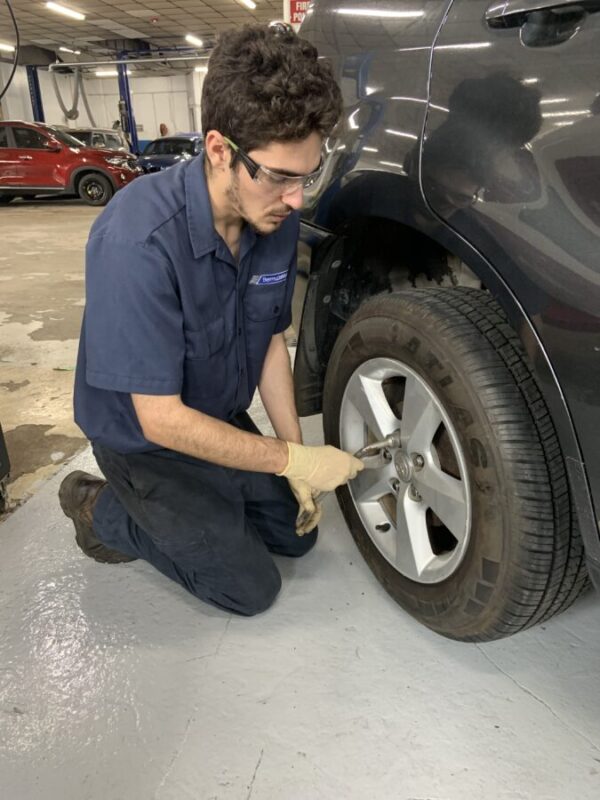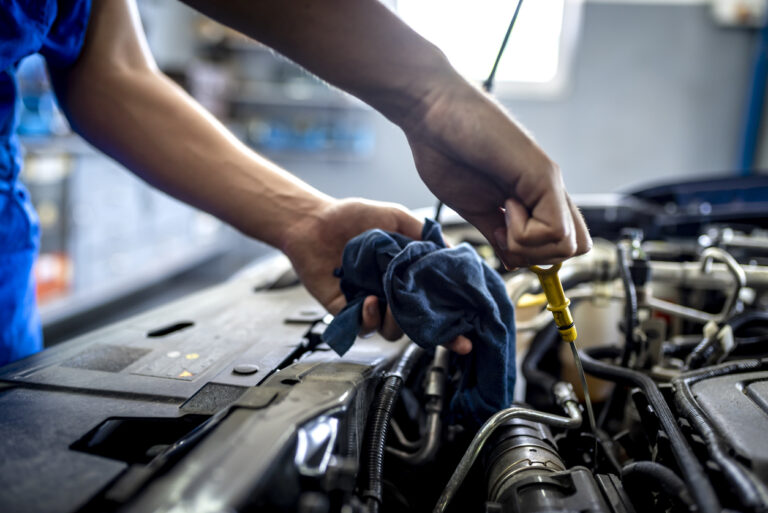Prior to March 2023, I would get in my car hoping that if something went wrong I would be near a gas station or spotted by a good Samaritan who also happened to be a car mechanic.
If the battery was flat, I was clueless. If odd dashboard lights went on, I ignored them. If my tyre was flat, I panicked, and while I was once taught how to check my oil, I never actually did.
Enter William Madeiros, managing director of Bermuda Motors, and Nicholas Fletcher, the most patient car mechanic in Bermuda. When I asked for some basic car maintenance tips for an article I was writing, they replied by telling me to don my proverbial overalls. Mr Fletcher was going to make me do them myself!

Here is what I learnt, and if I can do it, anyone can:
Tyre Change 101: My biggest fear about changing a tyre was that I wouldn’t be strong enough to loosen the lug nuts. I was!
To begin, put the handbrake on and the car in park. With a manual or stick-shift, put it into first gear and “choke off” the front wheels: put something, like a large piece of wood, in front of them to stop the car moving forward. Make sure the car is on flat ground.
Loosen the nuts using the lug nut wrench – my car-related vocabulary has also improved – while the wheel is on the ground. Turn left to loosen. If doing this by hand, arrange the wrench so you are pulling back, not pushing down, and do it on one knee for better control. If that doesn’t work, rearrange the wrench, balance yourself against the car and use your foot to push down.
Then, raise the car. Use the scissor jack until the wheel is about an inch off the ground. Remove the nuts and ease the wheel off.
When replacing the wheel, sit down with your legs open. Not elegant, but it works! Tyres are heavy and legs are strong. Use your legs to balance the tyre and your knees to align the holes.
Put the nuts back on by hand before using the wrench to tighten. When tightening, do it in a “star”. Start at the top, do the bottom next, then the one next to the first one and so on. This keeps the tyre straight. Lower the car slowly.
Tyre pressure: This can be checked at any gas station. On the driver’s side, when the door is open, you can usually find the psi or bar your tyres should be. Check that number, then get the tyre pressure gauge.
Take the cap off the tyre, push in the plug, and check the reading. If too low, press the lever to let in more air. Press in the plug to release air.
Oil: This, along with the filter, should be changed at least every 6,000km. Some car brands recommend more often. When checking if you have enough oil, keep a rag handy to clean the dipstick. If the oil is light brown and clear, it’s in good condition.
Charging a Flat Battery: Invest in jump leads and know your positive from negative. Often, there will be a + and –. Positive is usually a different colour and protected.
Fix the positive jump lead to the positive side of the battery, and the negative to the negative of both cars. Make sure to untangle them first and never let the metal clips touch once one end is hooked up. Sparks will fly!
Turn on the working car and wait before turning on the flat one. A hybrid vehicle cannot charge a non-hybrid one.
Any finally: Often, hidden behind the glove compartment, is the cabin filter. When it fills up with dust and debris, the car will not cool. You can shake out the debris, but it will also need changing when too dirty.
Oh, and if you notice anything unusual happening on your dashboard. Don’t ignore it. Go to the garage!

